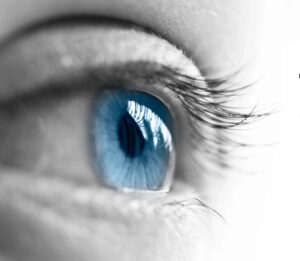
How to manage a setback in healing your trauma
Many of our therapists are trauma treatment specialists, and one thing that is often seen by them are set backs in the healing process from trauma. Whether it stems from a recent personal crisis or upheaval of one’s life routine, these things can feel like your entire world is falling apart again. What is critical is to remember that setbacks are normal and can actually be a part of the healing experience. When giving yourself a little grace and continued hopeful effort, you will see yourself finding yourself on the healing journey again.
How to manage a setback in healing trauma?
- Allow yourself to feel it.
In any setback of life, it is important to feel and acknowledge the emotions that come with it. Disappointment, shame, anger, and confusion are common emotions to have when you find yourself falling backwards from progress. While some of the emotional experiences you may be having are similar to what you went through in the past, they may provide you with useful information on what areas of yourself may need further attention. Give yourself some grace in having these emotions, and share your observations with your therapist.
- Reflect & Begin Again
Spending time reflecting to understanding how the circumstances of this event may help you to recognize patterns or poor boundaries that you may need to examine and reset your life. Try being curious and open to observing the situation without preexisting assumptions or judgements so you can gain these insights. This new level of self awareness can be powerful and jumpstart your again on a healthy, healing path.
- Connect with Supports
Healing from a trauma requires support in all forms. Friends, family, or professional counselors give you the opportunity to receive comfort and validation in your healing journey. Sharing your struggles and seeking support is a strength, not a weakness. Speaking with these confidants can provide you with new awareness, compassion, and encouragement during a difficult time.
- Decide on changes for a better future
In this setback, you may find out learning new coping skills is just what you need to manage similar situations in the future. Perhaps being more consistent in your mindfulness practices is exactly what you need, or letting go of unhealthy, toxic people in your life will give you future safety. This setback can reinvigorate your commitment to your wellness practices, and boundaries in your life!
- A time for Self-Compassion & Recognition
In this moment, it is important to practice self compassion and frame your inner voice in a compassionate, encouraging way. It is normal to struggle at times in life and your inner voice should not be shaming or criticizing yourself right now. Recognize the gains you have made in your life up to this point. This will help you to foster a positive growth mindset and continue to acknowledge to yourself that healing is an ongoing process with its own sets of ups and down.
The healing journey can be a winding road of ups and downs, but with supportive outlets and commitment to healing you will find your way beyond the past and into your future. Continue the journey with one of our skilled clinicians, you can find a well matching therapist for you by visiting our clinicians page.
Learn More

What to know about EMDR Therapy
All you need to know about EMDR therapy
 EMDR…Have you heard that acronym yet? Maybe a friend is using it with their therapist. Or maybe you have seen TV show therapists (Ever watch Grey’s Anatomy or Criminal Minds?!) talk about its use and perform EMDR – don’t forget, what you see on TV rarely is done in reality! For professionals in the counseling world, this tool is even more intriguing as our understanding of how neuroscience and psychology intersect and continues to become more comprehensive. Have I peaked your curiosity yet? Read on to learn more and see if EMDR could be for you.
EMDR…Have you heard that acronym yet? Maybe a friend is using it with their therapist. Or maybe you have seen TV show therapists (Ever watch Grey’s Anatomy or Criminal Minds?!) talk about its use and perform EMDR – don’t forget, what you see on TV rarely is done in reality! For professionals in the counseling world, this tool is even more intriguing as our understanding of how neuroscience and psychology intersect and continues to become more comprehensive. Have I peaked your curiosity yet? Read on to learn more and see if EMDR could be for you.
Can EMDR help with my symptoms?
Eye Movement Desensitization and Reprocessing (EMDR) is a therapy tool developed in the last 30 years by Francine Shapiro, Ph.D. EMDR has quickly become the preferred treatment approach for individuals struggling with emotional health symptoms that stem from traumatic life events, and those who are diagnosed with Post Traumatic Stress Disorder. You need to have this diagnosis to benefit from EMDR however. The term ‘trauma’ is used, and there is a misunderstanding that has to mean something exceedingly terrible. We all experience life uniquely and a traumatic impact is something to be personally defined by the individual’s experience. What makes EMDR so beneficial for most individuals is that it focuses on the person’s individual experience, as this is how the brain assimilated that experience internally.
Because of this, EMDR is a exceptional tool for many issues beyond post traumatic symptoms. It has been used to support treatment of addictions, depressive disorders, anxiety and panic disorders, phobias, complex grief reactions, individuals with chronic physical health issues, and much more. EMDR can also be used in treating these same issues in children. All people can experience great gains from working with a therapist who uses EMDR!
Science behind EMDR
Eye Movement Desensitization and Reprocessing (EMDR) therapy is an interactive psychotherapy technique. It is a very focused approach for treating trauma and other symptoms. EMDR reconnects the client in a safe and measured way to the images, self-thoughts, emotions, and body sensations associated with the trauma, and allows the natural healing powers of the brain to move toward adaptive resolution. It is based on the idea that traumatic experiences have overwhelmed the brain’s natural coping capacity, and that the healing process can be facilitated through eye movements, which your therapist will call bilateral stimulation. Bilateral stimulation helps the brain to reassimilate an understanding of those past events in the context of the present, safe environment of the therapist’s office (this is called dual awareness), simultaneously allowing the strengths the client now possesses to help support the mind’s understanding of the current stance of the self.
EMDR is often used in conjunction with typical talk therapy modalities, and so you will still have an opportunity to develop a relationship and explore additional aspects of your life as needed.
How will I benefit from EMDR?
Can this help me? Absolutely! EMDR has been the most studied psychological treatment tool in the last 30 years. Study after study show the majority of people who initially present with symptoms of depression or anxiety, PTSD symptoms, and dissociative issues all demonstrate improvement through their work using EMDR. For a comprehensive list of clinical trials and meta analysis studies on the efficacy of EMDR, follow this link. https://www.emdr.com/research-overview/
The length of time for an individual to experience positive results depends on the presenting issue and the complexity of the trauma. We can adapt treatment focus if it is necessary for you to keep your services brief, but for complex trauma issues this is not advisable and you may want to engage into a different therapeutic modality. It would be important for you to address this issue with your therapist. EMDR can still be used within the standard clinical hour.
Who can provide EMDR therapy?
Now that you know more, you might be intrigued enough to want to explore EMDR further with a therapist. Ensuring you are matching yourself with a therapist who has the training and experience in correctly using this modality is important. Here are a few things that you can ask to fully understand your therapist’s competence in providing EMDR therapy:
–What organization sponsored your training in EMDR?
*Those who received their education from EMDRIA have been taught comprehensively in how to use the EMDR protocol
–Are you certified in EMDR?
*Certified EMDR therapists have spent additional supervision hours post initial training under the consultation with a Certified Consultant to enhance their knowledge and skill base.
-How often and when do you use EMDR in your clinical practice?
*This will help you to inform you of their experience and application in using EMDR with clients.
There is much information to absorb here. Do you want to learn more? Take a moment and watch https://youtu.be/Pkfln-ZtWeY youtube video created by EMDRIA for additional information. Miracles Counseling Centers has therapists who are trained in EMDR and would be happy to help you in your journey towards wellness. We have multiple clinicians trained in this excellent treatment approach. Please visit our clinician’s page to find a provider that can serve you!
Learn More
How to Manage Grief During the Holidays
Managing grief during the holidays
The holiday season is generally regarded as a time of joy to be shared with family and friends. However, for those who are grieving lost loved ones, this is often not the case. The holidays can actually magnify our sense of loss. Seasonal events and traditions that are supposed to be festive and fun may serve as painful reminders of our loved ones’ absence. Whether this is your first or tenth holiday without a loved one, you may find yourself experiencing heightened feelings of grief that seem overwhelming. We want you to balance your grief with still finding joy in the holidays. So how can you manage these feelings and survive the holiday season? Here are some tips:
- Avoid engaging in grief comparison- Grief is a universal response to loss, but the actual experience of grief is unique to each individual. Everyone processes and copes with grief differently, so your grief may look different from another friend or family member’s grief in response to the same loss. Know that there is no right way to grieve.
- Create new holiday traditions- Don’t be afraid to do something different because this year is different. Get creative and do something out of the ordinary or alter your previous traditions to better fit with this change in your life. For example, if you don’t feel like you have the energy to cook your usual meal at home, then go out to dinner!
- Find ways to honor your loved one- Acknowledge the absence of your loved one and participate in a holiday ritual to remember them. Here are some ideas to consider:
-Light a candle for the dinner table or leave an empty chair
-Eat your loved one’s favorite food
-Share your favorite memories of your loved one
-Say a few words of remembrance for your loved one
4. Give yourself permission to grieve- There are so many different feelings that can come with grief. You may experience sadness, anger, guilt, and joy all at once this season. All of these are valid. Accept these emotions without judgement. Allow yourself to feel them.
5. Set boundaries- Do whatever feels right for you during this time. You don’t have to go to every holiday event. Do things because you want to do them, not because someone else would want you to. If you need to be alone, honor that. If you need to be around others, seek them out. Make time to care for your own needs. Get enough rest and exercise.
6. Plan ahead- Many find that the anticipation of the holidays without a loved one is worse than the holidays themselves. Planning ahead can ease your anxiety about what the holidays will be like. Be sure to plan some comforting activities to look forward to. Come up with an escape plan so that you can easily leave an event or activity if you’re feeling overwhelmed.
7. Volunteer/Give- Spending time helping others this holiday season may bring some comfort in the midst of your grief. Donate to those in need in your loved one’s honor or volunteer with an organization.
8. Reach out for help- Don’t be afraid to ask for help when you’re struggling during the holidays. Talk about your feelings with loved ones and be honest about how you’d like to do things this year. Consider seeing a mental health professional or joining a grief support group. Here are a few resources:
-KinderMourn – Sliding scale services for bereaved parents, children, and teens
-GriefShare – Local grief support groups
https://www.griefshare.org/findagroup
-Novant Health Hospice & Supportive Care – Free counseling and bereavement support groups for anyone grieving the death of a loved one (Huntersville, Charlotte, Matthews)- (704) 384-6478
-Hospice & Palliative Care Charlotte Region – Sliding scale support groups in Huntersville, Lincolnton, Davidson, Charlotte, & Pineville
https://www.hpccr.org/grief-counseling
If you are grieving the loss of a loved one this holiday season, know that you are not alone. We understand that this can be a difficult time and are here to support you. Reach out to us!
Source(s): health.harvard.edu, psychologytoday.com, mayoclinichealthsystem.org, aarp.org
Learn More
